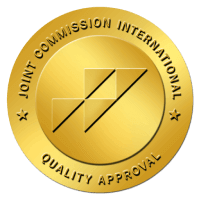COCCYDYNIA (Tailbone Pain)
Any kind of persistent tailbone discomfort is referred to as coccydynia.
The coccyx is the medical name for the tailbone, which lies at the bottom of the spine. The most common symptom of coccydynia is a localized pain that usually gets worse when you sit down or when you do anything that puts pressure on the lower back.
Women are substantially more likely than men to have the condition. It is usually caused by trauma to the tailbone or surrounding area, such as a backward fall or childbirth. On rare occasions, an infection or tumor also cause pain in the coccyx.
The purpose of coccydynia treatment is usually to reduce pain by reducing the pressure on the tailbone, lowering inflammation or muscular tension, or reducing pain signals to the brain using medicines. Tailbone pain is usually controlled or alleviated by a combination of treatments and activity modification.
The majority of coccydynia cases (around 90%) are treated without surgery, and coccyx pain will often get better with no treatment at all. Physiotherapy and coccyx injections may be recommended if symptoms do not improve.
Coccyx injection for Coccydynia
- What is a Coccyx Injection?
- How is a Coccyx Injection Administered?
- For how long will a Coccyx Injection help me?
Individuals suffering from persistent coccydynia (tailbone pain) may be candidates for local injections. A coccygeal injection involves the injection of a steroid and a numbing agent (like lidocaine) to relieve pain by decreasing inflammation around the coccyx region and the sacrococcygeal junction. The local anesthetic is designed to provide temporary pain relief, while the steroid acts as an anti-inflammatory.
The treatment is performed with the help of fluoroscopy (X-ray) or ultrasound monitoring. The doctor will first apply a local anesthetic to the region to be treated before inserting a tiny needle into the coccyx. A local anesthetic, typically lidocaine or bupivacaine, is administered with a corticosteroid. You can go home once this outpatient procedure, which can take 20 to 30 minutes, is done.
Immediate pain relief is likely the result of the local anesthetic used during the procedure; however, longer-lasting pain relief can occur between 2 and 7 days after the injection. Stretching exercises typically have the best results during the recovery period. Relief can last a few days, months, or even years, depending on the individual.
Depending on the circumstances, at your follow-up appointment physiotherapy and/or another round of injections may be advised. Not more than 3 injections per year are recommended.
If steroid injections are ineffective, a coccygectomy (surgical removal of the coccyx) may be advised.
The latter is reserved for severe cases in which all conservative pain management treatments have failed to control the pain.




